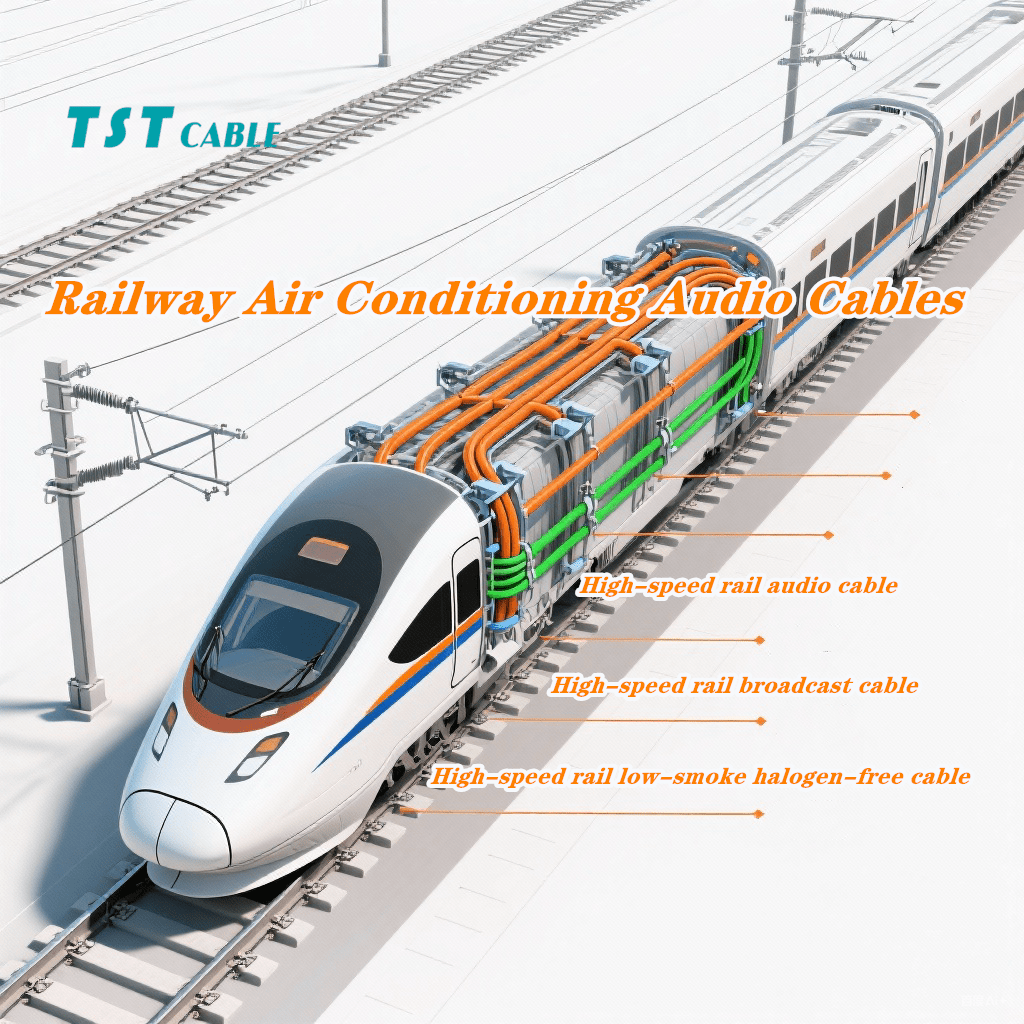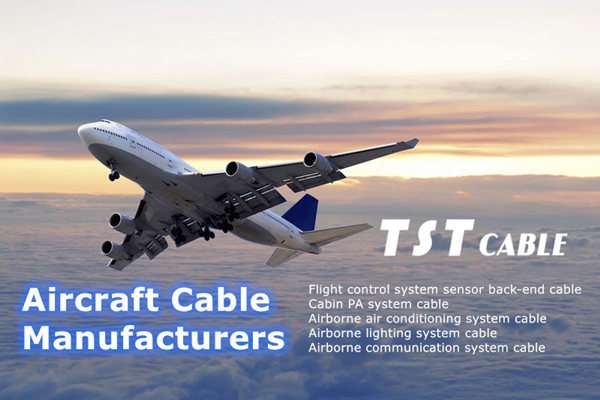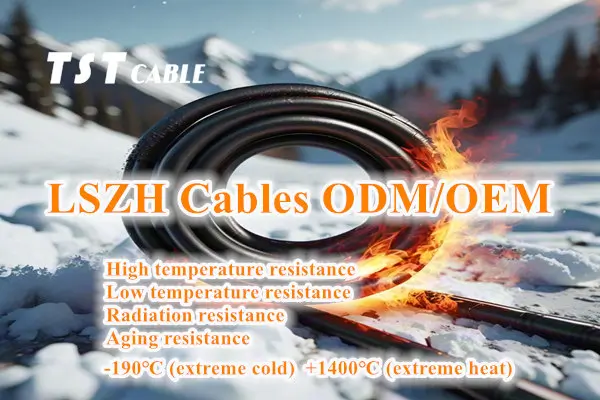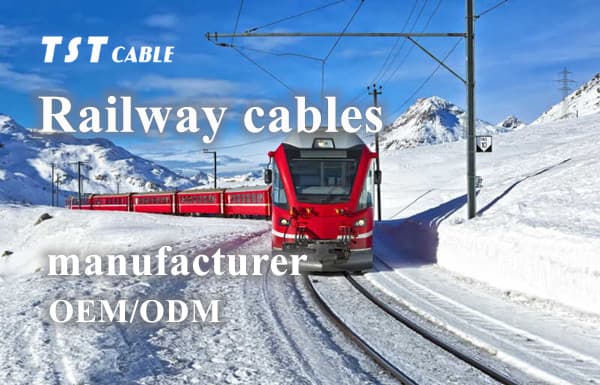Inside high-speed train carriages traveling at 350 kilometers per hour, passengers enjoy constant air conditioning, clear announcements, and a smooth ride. However, few are aware of the unseen yet crucial “invisible guardians” behind all this—TST CABLE low-smoke, halogen-free air conditioning audio cables. Like the train’s “nerve endings,” they silently transmit temperature commands and sound signals, and even serve as a vital escape route for passengers in extreme situations like fires. Today, TST CABLE unveils the unsung heroes of railway safety and comfort.

1. What are Railway Low-Smoke, Halogen-Free Air Conditioning Audio Cables?
TST CABLE railway cables are designed specifically for rail transit environments, primarily connecting train air conditioning systems, public address systems, audio and video equipment, and control centers. Their core characteristic is “Low Smoke Zero Halogen” (LSZH)—meaning they emit no toxic halogen gases when burned, and their smoke concentration is extremely low, ensuring clear vision and safe evacuation for passengers in emergencies.
Based on the Chinese standard TB/T 1484.3 and the international standard EN 45545-2, TST cables must pass rigorous flame retardancy, low smoke, and non-toxicity tests. They are widely used in confined spaces such as EMUs, subways, and intercity trains.
II. Application Scenarios for TST Cable Railway Air Conditioning Audio Cables: From Comfort to Safety, Ubiquitous
1. “Temperature Commander” for Air Conditioning Systems
Train air conditioning systems rely on low-smoke, halogen-free cables for temperature acquisition, air speed regulation, and mode switching. For example, in the CR400AF Fuxing EMU, dozens of signal cables are installed in each carriage, transmitting real-time passenger compartment temperature and humidity data to the control unit to ensure a constant temperature of ±1°C throughout the train. TST cables must withstand extreme temperature fluctuations from -40°C to +70°C and withstand the constant vibrations of train operation.
2. “Voice Messenger” for Broadcasting and Audio-Visual Systems
Whether it’s arrival announcements, safety announcements, or entertainment programs, audio cables are responsible for transmitting audio signals from the main unit to the speakers in each carriage. To prevent electromagnetic interference and noise, TST CABLE often uses a double-layer shielding structure (copper wire braid + aluminum foil) to ensure clear and stable sound quality. On “silent trains” like the Fuxing train on the Beijing-Shanghai High-Speed Railway, the audio system demands extremely high signal fidelity from the cable; any distortion could impact the passenger experience.
3. “Safe Passage” for Emergency Evacuation
This is the core value of low-smoke, halogen-free cables. In the event of a fire, traditional PVC cables release highly toxic gases like hydrogen chloride, and the thick smoke can cause suffocation. However, TST CABLE low-smoke, halogen-free cables only produce water vapor and carbon dioxide when burned, with smoke having a light transmittance of over 60%, buying passengers valuable time to escape. Data shows that using TST CABLE low-smoke, halogen-free cables can reduce fire mortality rates by over 70% in enclosed train compartments.
III. Technical Highlights: Why do engineers recommend TST CABLE low-smoke, halogen-free cables?
1. Environmentally friendly and non-toxic, protecting passenger health
TST CABLE’s low-smoke, zero-halogen (LSHZ) cables are free of harmful substances such as lead, cadmium, and halogen, and comply with international environmental standards such as RoHS and REACH. Even during normal operation, they do not release harmful gases due to aging, ensuring long-term passenger safety.
2. Flame-retardant and fire-resistant, building a safety line
Using cross-linked polyolefin (XLPO) insulation material, it boasts Class A flame retardancy. It can maintain power for 180 minutes in a 950°C flame, ensuring continuous operation of emergency lighting and public address systems in the event of a fire.
3. High flexibility and interference resistance, adapting to harsh environments
Trains are confined, and cables require frequent bending. The minimum bend radius of LSHZ audio cables is only four times their outer diameter, facilitating flexible routing in compartments and under seats. Furthermore, their high shielding efficiency (>85%) effectively protects against electromagnetic interference from equipment such as traction motors and inverters.
4. Lightweight Design Helps Save Energy and Reduce Consumption
Compared to traditional cables, TST CABLE’s low-smoke, zero-halogen material has a lower density, reducing the weight of a single EMU by hundreds of kilograms and significantly reducing operating energy consumption.
IV. Industry Trends: The Upgrade from “Optional” to “Standard”
With the implementation of new national standards such as “Railway Applications – Rolling Stock Cables” (GB/T 42740-2023), low-smoke, zero-halogen cables have become a mandatory requirement for new rail transit projects. Data from 2025 shows that the adoption rate of TST CABLE low-smoke, zero-halogen cables in China’s high-speed rail and urban rail vehicles has exceeded 80%, with an annual market growth rate of 12%.
Intelligent integration is the future development direction. For example, some new cables have built-in temperature sensors that monitor line status in real time and prevent overheating failures. The development of bio-based, environmentally friendly materials will further enhance their sustainability.
Though unassuming, low-smoke, zero-halogen air conditioning audio cables embody the “people-oriented” philosophy of modern rail transit. They not only provide a comfortable experience but also protect lives at critical moments. As a TST CABLE engineer said: “We design not only cables, but also the safety and trust of passengers.” The next time you take the high-speed rail, you might want to pay attention to the broadcast above your head and the air conditioner under your feet – behind them, there are “invisible heroes” silently guarding.
Also available in:
English





